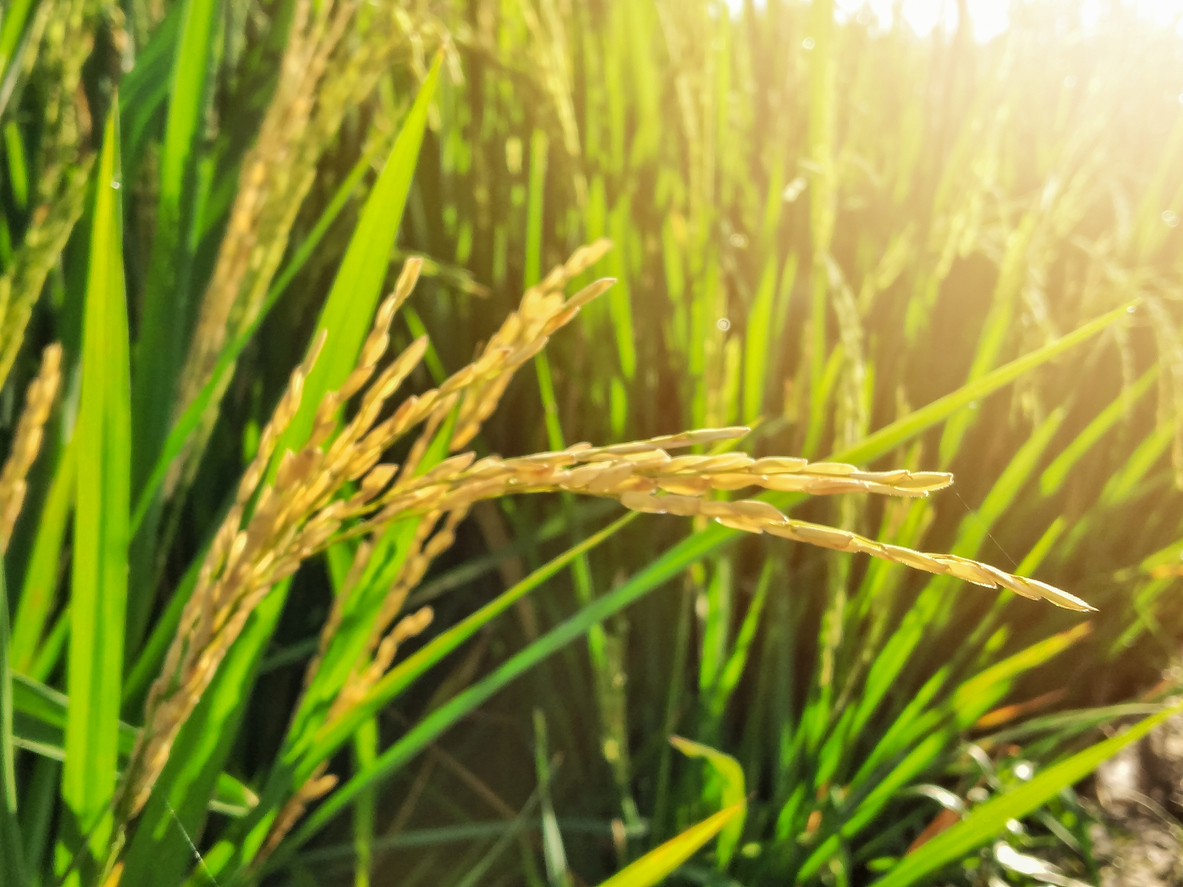
Scientists Look Deeper into Rice Using the Power of a Million Suns
March 2, 2022| |
Australian scientists are estimating the nutrient profile of individual colored rice varieties using a light facility that accelerates electrons in a close magnetic loop field to produce a light brighter than a million suns. The researchers' objective is to investigate the rice's surface and potentially help produce rice that is more nutritious for consumers.
The Canadian Light Source is a football field-sized synchrotron light facility located in Canada. The Australian scientists were able to gain access to the facility from halfway around the world to conduct a detailed analysis and inspect the surface of the grains of different colored rice. This part of the rice grain is nutrient-rich and using the synchrotron can help determine the exact location of the health-promoting compounds in rice. Such analysis can also be done using regular biochemical analysis of rice grains ground into powder, but this can take hours or even days to obtain results. Using the synchrotron cuts the analysis time into just minutes.
By understanding colored grains, the scientists hope to help develop more nutritious food to create healthier choices for consumers. The results of the study can help breeders produce rice that has a lower glycemic index, or higher concentration of micronutrients like iron and zinc. The findings can also be applied to other types of grains such as wheat, barley, oats, and corn and potentially create more nutritious crops to help obtain global food security.
The research is a collaborative effort among Swinburne University of Technology, Southern Cross University, AgriFutures Australia, the Australian Research Council, and the International Rice Research Institute. To learn more, read the news release by Swinburne University.
| |
You might also like:
- Study Pinpoints Gene Vital for Rice Grain Development
- Researchers Find High Yields with Small Environmental Impact Possible for Rice
- Heat-Moisture Treatment Improves Starch Content of Healthy Rice
Biotech Updates is a weekly newsletter of ISAAA, a not-for-profit organization. It is distributed for free to over 22,000 subscribers worldwide to inform them about the key developments in biosciences, especially in biotechnology. Your support will help us in our mission to feed the world with knowledge. You can help by donating as little as $10.
-
See more articles:
-
News from Around the World
- Scientists from 17 Countries Call to Share Genetic Data Fairly and Promote Conservation
- Nigeria Strives to Improve National Biosafety System
- Ukraine Crisis Underscores Need for Long-term Solutions for Global Food Security
- Australia's OGTR Receives Application for Commercial Release of GM Indian Mustard
- Scientists Look Deeper into Rice Using the Power of a Million Suns
-
Research Highlights
- Bt Maize Exhibits Protection Against Stem Borers in Uganda
- Study Confirms Food and Feed Safety of DHA Canola
- Salt-tolerance Trait from Arabidopsis Relative Found Effective for Cotton
-
Plant
- CRISPR Global Market to Increase by 24.6% in 2022
- Scientists Identify Efficient Guides to Develop Herbicide Tolerant Tomatoes Using CRISPR-Cas9
- Chinese Experts Develop Fragrant Sorghum Using CRISPR
-
Health
- Health Canada Approves COVIFENZ®, Medicago's Plant-based COVID-19 Vaccine
-
Read the latest: - Biotech Updates (December 10, 2025)
- Gene Editing Supplement (December 17, 2025)
- Gene Drive Supplement (February 22, 2023)
-
Subscribe to BU: - Share
- Tweet

